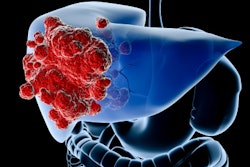Interventional radiologists received an aggregate of over $60 million in payments from drug and medical device companies between 2017 and 2021, but most of this money is going to just a few of these physicians, according to research published July 24 in Current Problems in Diagnostic Radiology.
After analyzing the Open Payments database, a group of researchers led by Chris Lee of Yale University found that 3% of interventional radiologists received two-thirds of the total sum of industry payments over the five-year period.
“These physicians are leaders in their field with influence in hospitals, research, associations, and social media,” the authors wrote. “Further work is needed to understand how the concentration of these payments affects decisions in clinical practice and policy.”
The researchers used the Open Payments database to assess the characteristics of interventional radiologists who received more than $100,000 in general industry payments from 2017-2021. Consulting fees, speaker fees, education, and gifts were included in the analysis, while payments for research, royalties, and licenses were excluded.
Of the 4,272 interventional radiologists who received industry payments during the five-year period, 125 (3%) received cumulative payments greater than $100,000. These interventional radiologists had a median cumulative payment value of $214,380 ($141,812 - $383,740) and received $40 million (66%) of the $60.9 million in total payments.
These payments most commonly included consulting fees (55%) and speaker fees (38%). Of the 125 high-payment interventional radiologists, 121 (97%) received consulting fees for an aggregate total of $22 million. What’s more, 119 (95%) received speaker fees for an aggregate total of $15 million.
The two most frequent highest-paying companies were Sirtex Medical (25) and Medtronic (12), according to the researchers.
Of the 125 high-payment interventional radiologists:
- 72 (58%) worked in an academic setting/teaching hospital
- 59 (47%) had faculty appointments
- 37 (30%) had hospital leadership positions
- 27 (22%) were authors of clinical practice guidelines
- 23 (18%) served on the editorial boards of prominent journals
- 15 (12%) had positions in specialty association leadership
“A substantial proportion of these high payment physicians hold leadership positions in hospitals and national societies, write guidelines, and are on editorial boards within the field,” the authors wrote.
Among this group of interventional radiologists, 48 (38%) had a Twitter presence with a median of 1,077 followers.
The researchers also noted that only 4 (3%) of the high-payment interventional radiology physicians were females.
“Despite being 13% of the academic IR physician workforce, female IR physicians receive fewer and lower industry payments, earning 1% of total payments,” they wrote. “The very low representation of females in high payment IR physicians and potentially key opinion leaders is a reason for concern, since lack of role models has been speculated to be a reason for lack of greater diversity. However, there is lack of data showing good correlation between representation at senior and influential levels in academic radiology and its impact on increased diversity.”
The full journal article can be found here.



















